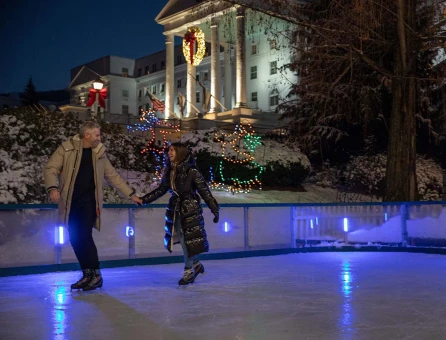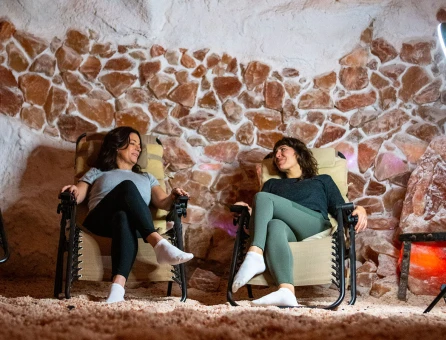Measuring the success of a local tourism bureau is not an exact science.
No one understands that better than Kara Dense, executive director of the Greenbrier County Convention and Visitors Bureau (CVB). Her organization recently emerged from its most challenging 12-month span — the fiscal year that began only eight days after the county suffered a monumental flood.
What has been termed a 1,000-year flood event washed away homes and stole lives in June 2016. It also caused businesses to shut down — some permanently — and wreaked millions of dollars in damage to infrastructure.
Greenbrier County’s biggest industry — tourism — was staring into the abyss, as the region’s reputation as a peaceful getaway was replaced in the traveling public’s minds by media images of horrific devastation.
Using the proceeds of a $450,000 loan from the Greenbrier County Commission, the CVB quickly implemented a strategic marketing push to restore the local tourism industry’s image and reassure potential visitors that all was not lost.
But one very important tourist attraction was indeed lost for the start of FY 2016-17, as last year’s Greenbrier Classic PGA event had to be canceled when the White Sulphur Springs resort that hosts the golf tournament suffered major damage in the flood.
“The impact of the Classic on the economy is huge,” Dense said. “Hotels are usually full, with support staff and golf fans.”
Lodging, restaurants, gas stations, shops and entertainment venues all benefit directly from tourist spending, and many others benefit indirectly, as local residents and business owners spend the money they earn as a result of the influx of thousands of visitors drawn by the tournament.
“The CVB certainly felt the impact of not having the Classic (in 2016),” Dense said. “Hotel/motel taxes were down. It was a true plummet.”
County bed tax revenue for July 2016 was down by 58 percent over 2015 figures; August was down 23 percent, Dense said. Much of that drop could be attributed to the loss of the July golf tournament, added to the flood-related closure of The Greenbrier for some 18 days in the midst of what is usually its busiest season.
Most of the county’s bed taxes come from the resort’s overnight guests. As required by state law, the county splits the hotel/motel tax revenue it collects with the CVB, as does the city of Lewisburg. And those bed taxes fuel most of the tourism bureau’s annual budget, which typically hovers near the $1 million mark.
Unlike the county, Lewisburg had no lodging establishments damaged by the 2016 flood.
“Lewisburg had a lot of flood relief workers staying in its hotels (that summer), but bed tax revenue there was still down in July (2016) by 5 to 10 percent,” Dense said.
But lodging rebounded, presumably lifting the rest of the local tourism industry with it. By the end of the fiscal year on June 30, 2017, bed taxes had surged upward to such an extent that total revenue for the year was only 17 percent lower than the previous year for the county and only around three percent lower in Lewisburg, Dense said.
CVB marketing manager Beth Gill cautioned that even with bed tax revenue on the way to recovery, it is impossible to put a firm figure on how many room-nights — and, thus, how many visitors — that money really represents. Lodging establishments may offer discounts on room rates or special packages with different price points, she explained. Any change in room rates will affect bed taxes accordingly.
Lewisburg collects the maximum allowable 6 percent bed tax from lodging establishments within the city’s borders, while Greenbrier County collects only half that — 3 percent — on most of the rest of the county’s hotels, inns and bed & breakfasts.
Gill also pointed out there’s no way for the CVB — or probably even the businesses themselves — to determine what portion of restaurant or retail shop or entertainment revenue is derived from visitors, as opposed to local patrons.
What the bureau can — and does — measure are such indicators as guests who cross the threshold of the CVB-owned Greenbrier Valley Visitors Center in downtown Lewisburg, how many brochures are distributed, how many Facebook “likes” are amassed, how many “hits” its website receives and the number of times a paid digital advertisement is displayed.
Two of those measurements — Visitors Center guests and brochures distributed — were down last fiscal year from the previous year. The Visitors Center saw 3,099 fewer tourists, and 33,097 fewer brochures were distributed, according to the CVB’s annual reports for those years.
But several of the statistics collected digitally showed sturdy gains in 2016-17 over the previous year. Website traffic was up 29 percent, with 161,475 unique website users last year. Advertising impressions (the number of times a paid ad was displayed in print or online) increased by 69 percent, and Facebook “likes” rose a whopping 80 percent, from 12,349 in 2015-16 to 22,183 last year.
The CVB spent all of the $450,000 loan from the county commission last year, with about 65 percent of it going to direct advertising, 28 percent to marketing development and 7 percent to public relations, according to the annual report. The nonprofit organization’s total expenditure for marketing in 2016-17 was $572,670 — a figure that included loan proceeds as well as funds allotted from the CVB’s regular budget.
Loan documents signed in August of last year call for the CVB to begin repaying its debt to the county on Jan. 1, 2018, when the first of five equal annual installments of $90,000 is due.
Issuing the organization’s annual report to Lewisburg City Council Sept. 19, Dense noted that The Greenbrier and downtown Lewisburg are the local tourism industry’s “big drivers.”
She pointed out that the city, its special events and businesses continue to accumulate accolades. Last year, Lewisburg was eighth on USA Today’s list of “10 Best Southern Small Towns,” the Lewisburg Chocolate Festival was honored as the Best Festival in WV Living’s Best of WV 2017 awards, and several of the city’s restaurants were among the state Tourism Office’s “101 Unique Places to Dine in West Virginia.”
This summer, Lewisburg was a finalist in Blue Ridge Outdoors’ “Top Adventure Towns” contest, the results of which will be announced in the November issue of the publication, both in print and online. The CVB is largely responsible for publicizing and encouraging the local online voting that determines winners in such contests.
A smiling Dense hinted that she already knows the contest’s outcome, but could only tell city officials, “We’re going to get some attention.”
Alluding to the bed taxes that Lewisburg splits with the CVB, Mayor John Manchester said, “That’s money very well spent. (The CVB) is a very strong, well-run outfit.”















.png)

